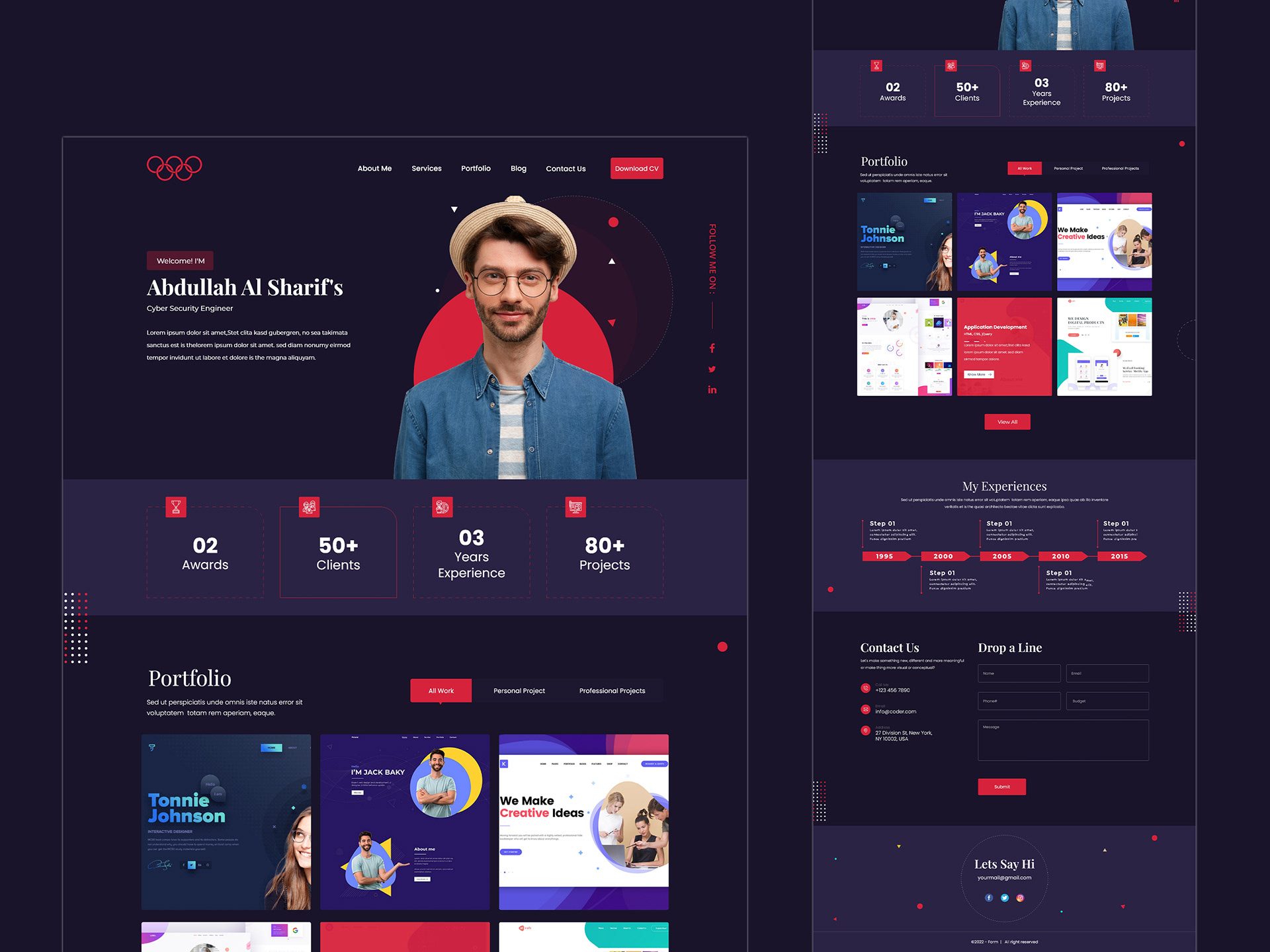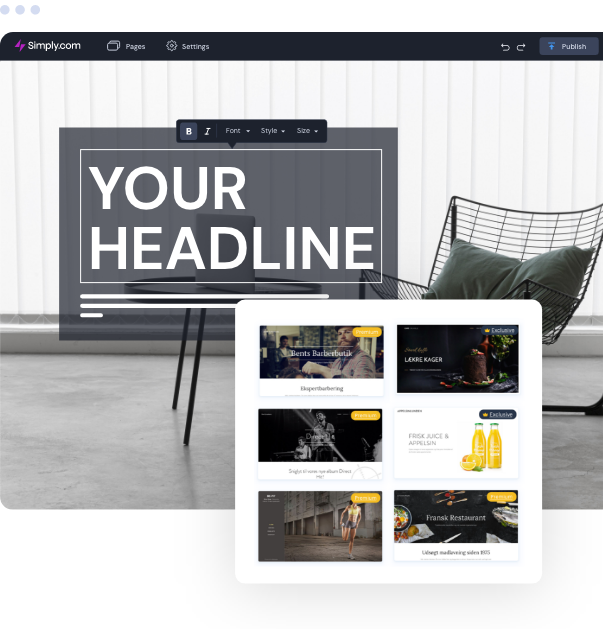Exploring the Latest Innovations in Website Design for Enhanced Functionality
Exploring the Latest Innovations in Website Design for Enhanced Functionality
Blog Article
Modern Web Site Design That Captures Interest and Converts
In a progressively digital landscape, modern-day web site design has emerged as an essential consider catching user attention and driving conversions. By purposefully utilizing aesthetic pecking order, responsive designs, and involving interactive aspects, developers can produce experiences that not only bring in visitors but likewise assist in purposeful communications. Additionally, efficient call-to-action approaches play a critical function in directing users towards desired end results. As we check out these vital components, it becomes clear that recognizing their interaction can dramatically impact a website's performance and individual complete satisfaction. What are the vital components that absolutely make a distinction?
Importance of Visual Pecking Order
Visual power structure is a critical aspect in website design, as it overviews users' focus and enhances their general experience. By strategically arranging material, designers can route individuals to the most crucial info first, thereby increasing interaction and boosting usability.
Including a logical circulation in content plan is important; as an example, putting one of the most critical details on top of a page cultivates prompt acknowledgment. Constant use of typography, such as varying font sizes and designs, aids establish a clear material framework. This organization not just help in navigation yet additionally constructs trust fund, as individuals feel a lot more comfortable when they can quickly find what they are searching for.
Eventually, a well-executed aesthetic power structure not just boosts aesthetic charm but additionally significantly impacts customer habits. By prioritizing crucial components and guaranteeing a smooth experience, designers can properly transform site visitors into customers, enhancing the significance of this foundational style concept in modern internet site growth.
Responsive Style for All Instruments
Developing a smooth experience throughout numerous tools is necessary in today's electronic landscape, where customers accessibility sites from desktops, tablets, and mobile phones alike. Receptive style is a critical strategy that ensures sites adapt fluidly to different screen positionings, resolutions, and sizes. By using flexible grids, photos, and CSS media questions, designers can produce designs that preserve visual honesty and capability, no matter of the gadget being used.
The importance of receptive layout prolongs beyond visual appeals; it straight affects user engagement and conversion rates. A web site that operates well on all gadgets encourages longer visits and decreases bounce rates, as individuals are more probable to engage with material that is very easy to browse. In addition, search engines, specifically Google, focus on mobile-friendly sites in their positions, making responsive design an essential part of seo (SEO)
Incorporating receptive design not only boosts customer experience however also streamlines the advancement process. By producing a single website that works across tools, services can save time and sources contrasted to developing different mobile and desktop computer variations. Inevitably, responsive layout is an essential technique for modern-day website layout, ensuring access and satisfaction for all customers, no matter of their device.
Involving Interactive Components
While a responsive design prepares for a useful web site, including appealing interactive elements is essential for capturing individual interest and cultivating much deeper connections. Website Design. Interactive informative post components, such as animations, tests, and clickable infographics, develop a much more dynamic customer experience, urging visitors to spend even more time on the website
Incorporating interactive attributes can additionally lead customers through complex information, making it much easier to absorb web content. Interactive sliders can highlight product variations, while ingrained videos can supply presentations or testimonies that reverberate more than static images or text. Furthermore, gamification strategies, like rewards for completing tasks or engaging with material, can boost customer motivation and retention.
Efficient usage of interactive aspects not only enriches the individual experience but can also lead to greater conversion prices. It is crucial to balance interactivity with performance; extremely complex features might prevent site rate, adversely impacting customer complete satisfaction.
Streamlined Navigation Practices
Reliable navigating is a keystone of any kind of effective web site, as it directly affects individual experience and content availability. Structured navigating methods guarantee that users can quickly situate information, enhancing their communication with the site. A well-structured navigation food selection ought to be user-friendly and easy, commonly including a limited variety of main classifications to prevent frustrating visitors.
To accomplish streamlined navigating, designers should prioritize a hierarchical structure that rationally arranges content. Carrying out breadcrumb tracks can give customers with context concerning their current area within the site, enabling seamless backtracking. Furthermore, utilizing drop-down menus can properly conserve room while still offering accessibility to subcategories.
Receptive design is important, as navigation must be functional throughout all tools (Website Design). Mobile customers, specifically, gain from touch-friendly menus and collapsible click to find out more sections that maintain usability without jeopardizing visual appeals

Efficient Call-to-Action Techniques
A well-crafted call-to-action (CTA) is necessary for assisting customers toward desired results on a website, check these guys out as it motivates them to involve with web content or make an acquisition. To optimize their effectiveness, CTAs must be clear, compelling, and purposefully placed throughout the site.
First, make use of action-oriented language that communicates necessity or worth, such as "Get going," "Join Now," or "Claim Your Price cut." This language not just motivates individuals yet additionally sets clear expectations concerning the following steps.
Second, consider layout elements; CTAs should stick out aesthetically via contrasting colors, adequate whitespace, and popular positioning. A button that is easy to see and click boosts the likelihood of user communication.
Furthermore, individualizing CTAs based upon individual actions or demographics can substantially enhance interaction. Tailored messages resonate extra with individuals, driving higher conversion rates.

Final Thought
These components collectively boost customer experience, guaranteeing that visitors remain involved and encouraged to discover web content additionally. By focusing on these design principles, companies can significantly enhance customer retention and conversion prices, ultimately leading to higher success in the electronic landscape.
In a significantly electronic landscape, modern website design has emerged as a crucial variable in capturing user interest and driving conversions.Visual hierarchy is an important element in internet site layout, as it overviews users' interest and enhances their overall experience.The relevance of receptive style extends past aesthetics; it straight affects customer interaction and conversion prices.Integrating receptive style not just boosts customer experience yet likewise enhances the advancement process. Ultimately, responsive style is an essential technique for contemporary internet site layout, ensuring ease of access and contentment for all users, regardless of their tool.
Report this page